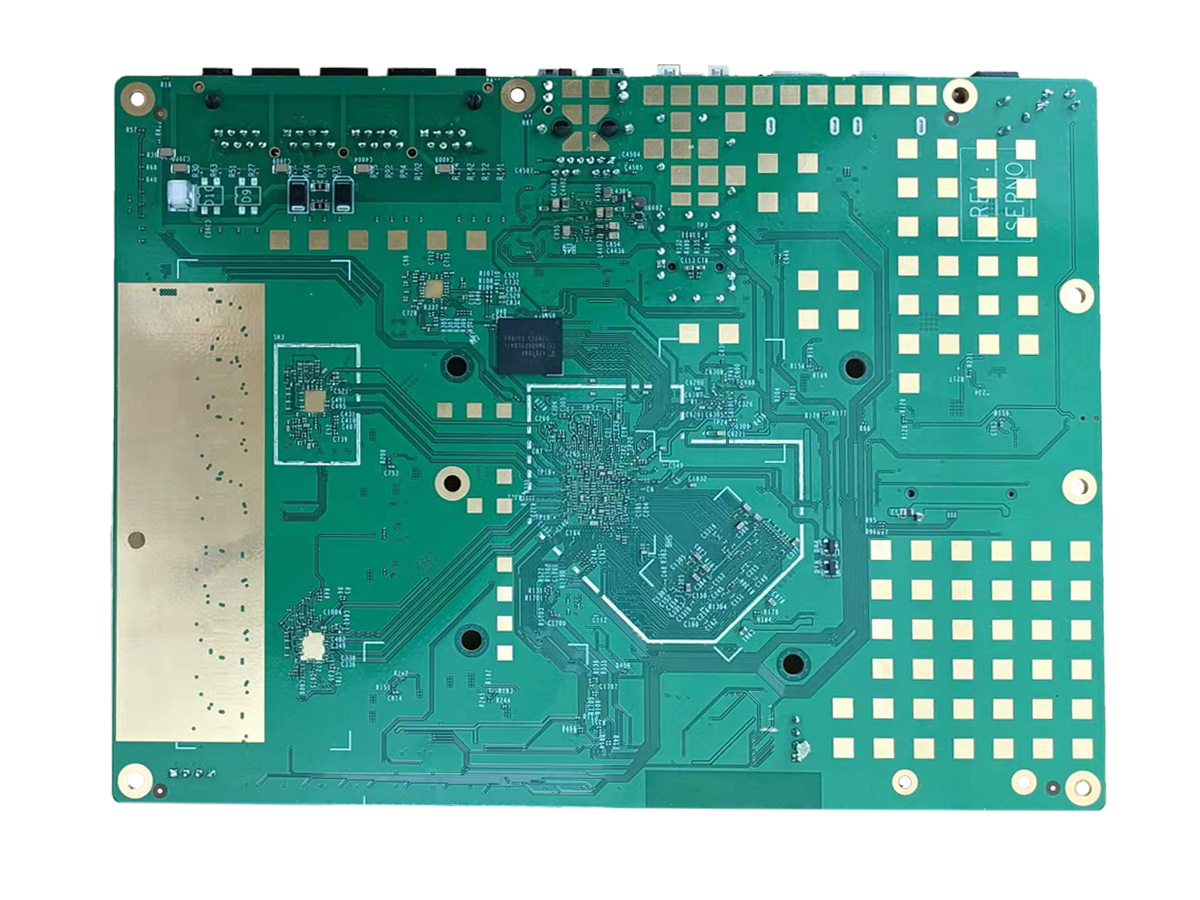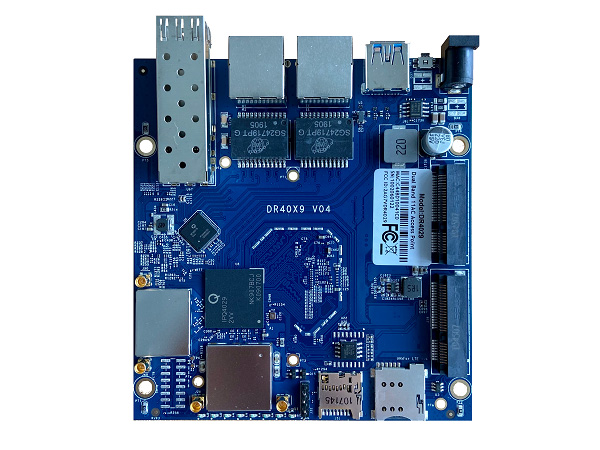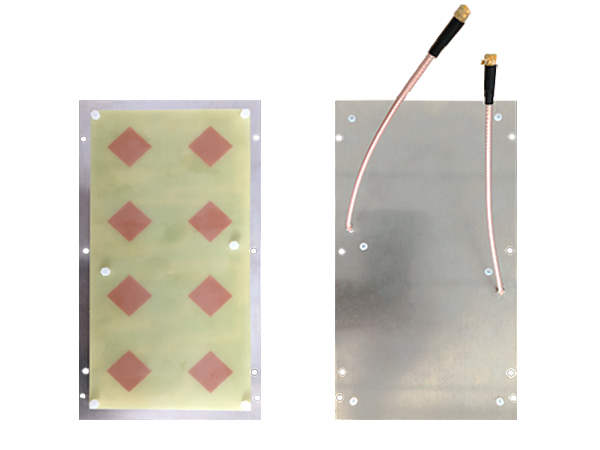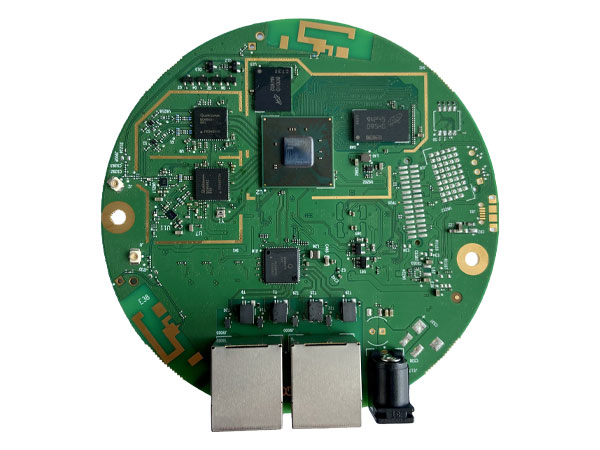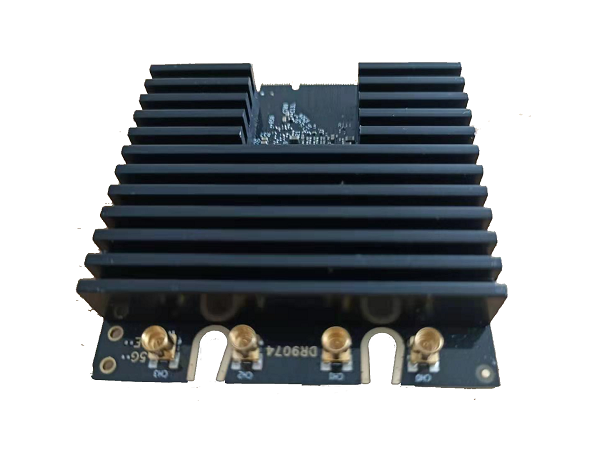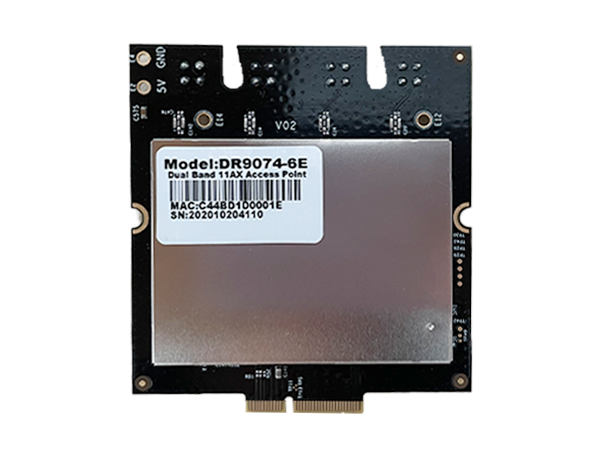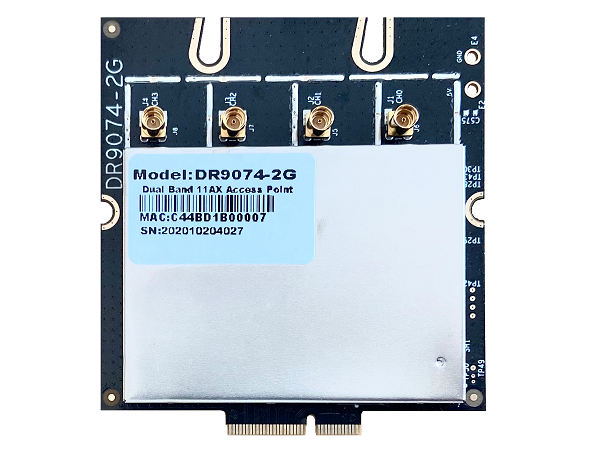Support WiFi 6E Card,802.11ax,QCN9074 IPQ8072 4x4 2.4G & 5G
Features ■ Qualcomm Atheros IPQ8072A AR Quad Core CPU
■ On-board 5GHz radio, up to 2475 Mbps physical data rate 8 MB NOR Flash, 256MB NAND Flash
■ On-board 2.4GHz radio, up to 1147Mbps physical data rate
■ Support 802.11ac TX Beamforming
■ Support 802.11ac/802.11ax MU-MIMO DL and UL
■ Support OFDMA DL and UL
■ Tri-band support with 5G SBS (4x4/5GHz ) + 4x4/2.4GHz
■ Supports Dynamic Frequency Selection (DFS)
DR40X9
Featuring with industrial-grade IPQ4019/IPQ4029 chipset
Integrated with 2x 2 5G high power Radio module and 2x2 2.4G high power Radio module
Support 4.940GHz to 5.825GHz Frequency Range
Support 2.400GHz to 2.482GHz
Support 2 x 5G MMCX Connectors and 2x2.4G MMCX
Support 5MHz/10MHz/20MHz/40MHz/80MHz Bandwidth
Support 11ABGN/AC
Support fixed data rate
RoHS compliance ensure a high level protection of human health and the environment from risks that can be posed by chemicals
Our Firmware supports all the modules of Quectel
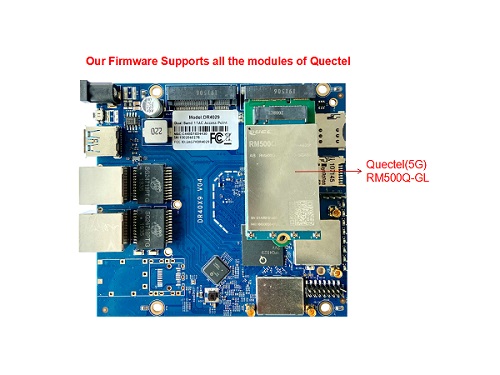 )
)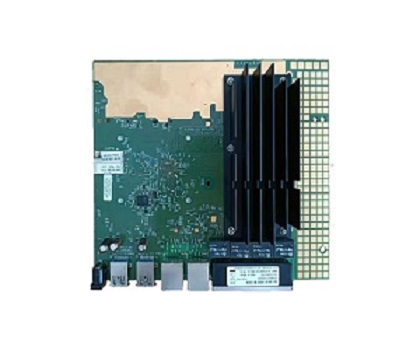
What is 802.11ac (WiFi 5)?
802.11ac is the 5th generation in WiFi standards and was introduced around 2013. 802.11ac is commonly referred to as WiFi 5 and was developed by the Wi-Fi Alliance to achieve gigabit speeds, meaning WiFi 5 could provide speeds up to 3.5 Gbps under optimal conditions. In addition to faster speeds, WiFi 5 offered wider WiFi frequency channels that allowed wireless devices to send and receive more data, resulting in faster overall performance. WiFi 5 (802.11ac) also introduced MU-MIMO technology that facilitated data to be sent to multiple devices simultaneously. Most notably, WiFi 5 was developed to only use the 5GHz wireless frequency, rather than both 2.4 GHz and 5 GHz frequencies.
What is 802.11ax (WiFi 6)?
802.11ax, or WiFi 6, is the latest WiFi standard and is the highest performing. WiFi 6 is capable of speeds up to 9.6 Gbps which means its faster than WiFi 5, making it better for video streaming, online gaming and more high-bandwidth applications. WiFi 6 offers more efficient data management for faster speeds and supports both the 2.4 GHz and 5 GHz frequencies for faster Internet across both frequency channels. A new feature called “Targeted Wake Time (TWT)” allows your router to put the WiFi connection to “sleep” when not in use, saving the battery life of your smartphones, laptops and other connected devices until they are needed. WiFi 6 has the power to higher number of connected devices and deliver more data to those devices, meaning you will have a much faster and more efficient Internet connection to all devices.
So, is WiFi 6 better than WiFi 5?
Yes, but with that yes comes an explanation as to WiFi 6’s key benefits and what ultimately makes it better than WiFi 5. WiFi 6’s key benefits include:
Next-generation WiFi technology
Faster speeds and performance
Can handle more connected devices without additional latency or lag
Better 2.4 GHz and 5 GHz spectrum performance
Increased MU-MIMO capacity from 4×4 (WiFi 5) to 8×8 (WiFi 6)
More capacity to deliver more data simultaneously to many connected devices
With any latest and greatest technology (wireless protocol included), increased capabilities are a given. WiFi 6 is no different. WiFi 6 offers multiple access channels, meaning one wireless channel can be divided into several different sub-channels, allowing more devices to be connected with the same fast speeds. WiFi 6 is especially useful for areas with a large number of people who are connected to WiFi and/or Internet, such as at hotels, airports, and stadiums.
Additionally, WiFi 6 promises faster speeds and increased range across compatible devices, so lag-times and disrupted connectivity are things of the past. While WiFi 6 still uses 2.4 GHz and 5 GHz bands, the dual-band capacity helps more devices stream faster than they could on WiFi 5. Overall, WiFi 6 is faster, but it also is more efficient with its signal.










